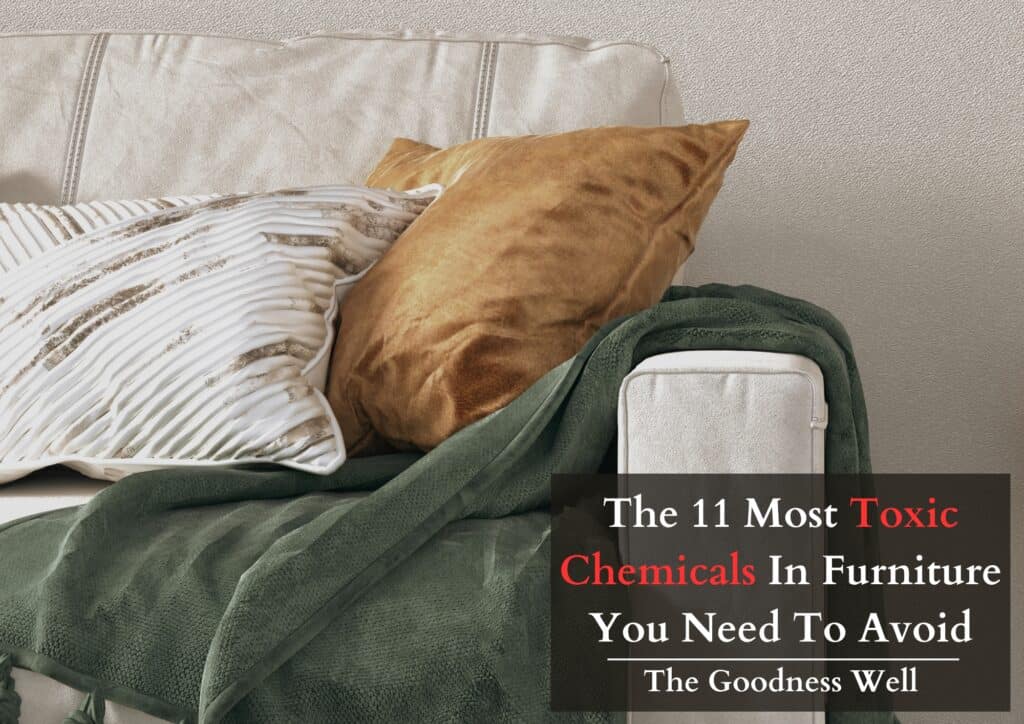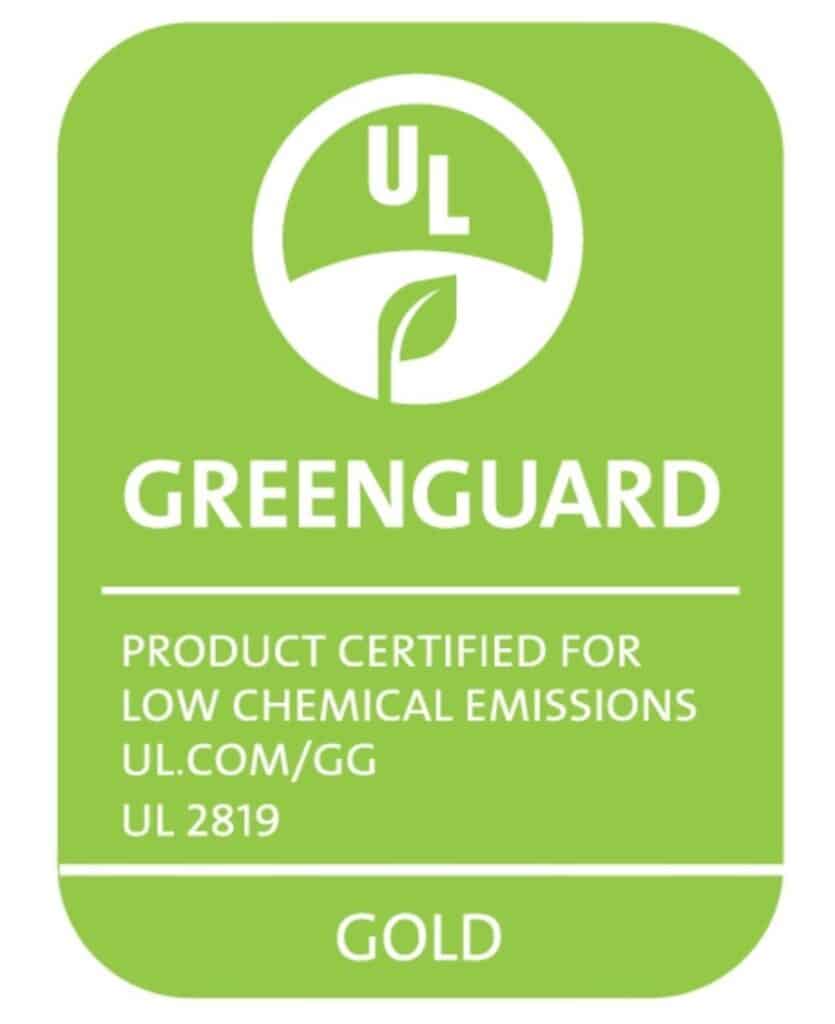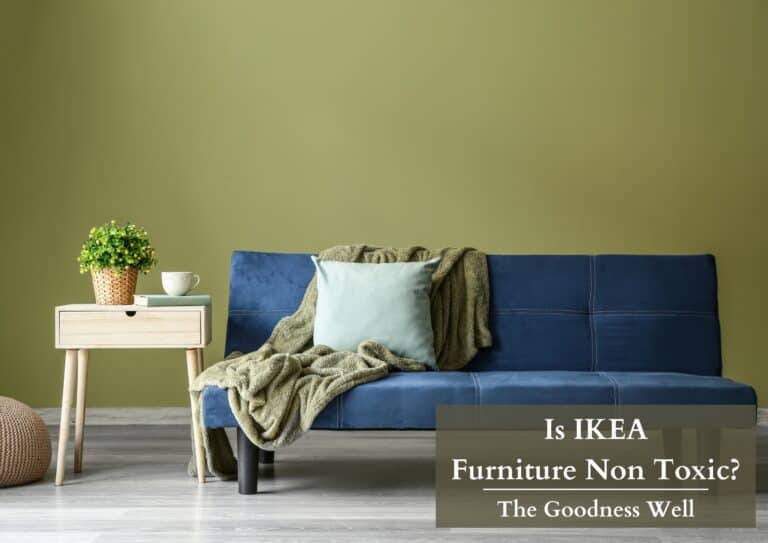11 Most Toxic Chemicals In Furniture You Need To Avoid

Furniture should serve as a comforting addition to our homes, providing comfort, relaxation, and of course style.
But for the average furniture piece that style and comfort come with serious health risks.
Unfortunately, most people don’t know harmful chemicals are hiding in their favorite couches, chairs, mattresses, and tables.
Journey with us, as we dig deep into chemicals you need to avoid in your furniture and why.
TL;DR
The 11 Most Toxic Chemicals In Furniture Are:
- Formaldehyde
- Per- and Polyfluoroalkyl Substances (PFAS)
- Flame Retardants
- Benzene
- Volatile Organic Compounds (VOCs)
- Fiberglass
- Polyvinyl Chloride (PVC)
- Phthalates
- Methylene Chloride
- Perfluorinated chemicals, or PFCs
- Pesticides
A Breakdown Of The 11 Most Toxic Chemicals You Need To Avoid
1. Formaldehyde
Formaldehyde is a colorless, strong-smelling gas often used in building materials and household products, like pressed wood furniture, glues, and some fabrics.
2. Per- and Polyfluoroalkyl Substances (PFAS)
Manufacturers use Per- and Polyfluoroalkyl Substances (PFAS), a group of man-made chemicals, in various everyday products like non-stick cookware, water-repellent fabrics, and certain food packaging.
PFAS earn the nickname “forever chemicals” for their resistance to breaking down, allowing them to accumulate persistently in both the environment and the human body.
3. Flame Retardants
Manufacturers add flame retardants to textiles, plastics, and electronics as a safety measure to slow down or prevent fire spread, thereby reducing fire-related hazards and injuries.
In response to health concerns, California’s Proposition 65 legislation was passed, requiring manufacturers to provide clear warnings if their products including flame retardants, chemicals known to cause cancer, birth defects, or other reproductive harm.
4. Benzene
Benzene, a colorless and sweet-smelling chemical, is widely used in the manufacturing of plastics, synthetic fibers, dyes, and certain detergents.
However, it’s also a known carcinogen, meaning it can cause cancer, particularly with long-term exposure, and can be harmful if inhaled or absorbed through the skin.
5. Volatile Organic Compounds (VOCs)
Volatile Organic Compounds (VOCs) found in materials like furniture paints, finishes, and adhesives, can off-gas and be released into the air during manufacturing.
The good news is that you can actually speed up the off-gassing process before it enters your home for good which can lower your risk for VOC indoor air pollution.
6. Fiberglass
Fiberglass is a type of material made from extremely fine fibers of glass. It is known for its strength, durability, and resistance to heat, fire, and water.
7. Polyvinyl Chloride (PVC)
PVC is a popular plastic used for many items but can release harmful chemicals like phthalates and dioxins, especially when it’s manufactured or disposed of improperly, posing health and environmental risks.
8. Phthalates
Manufacturers use phthalates to increase the flexibility and durability of plastics, commonly in products such as vinyl flooring, food packaging, and personal care items.
9. Methylene Chloride
Methylene chloride, also known as dichloromethane, is a volatile, powerful liquid solvent that is colorless and has a sweet aroma.
10. Perfluorinated chemicals, or PFCs
Perfluorinated chemicals (PFCs) are artificial chemicals made by attaching fluorine to carbon. They’re good at keeping oil and water away, which is why they’re used in a lot of products as water or stain repellants.
11. Pesticides
Last but not least, pesticides…
Manufacturers use pesticides in furniture, especially in imported wood and upholstered items, to prevent insect and mold damage during shipping and storage.
However, these chemicals can be harmful if they leach out into the air or come into direct contact with the skin, potentially causing health issues with prolonged exposure.

Pro Tip:
Look for certifications like Greenguard Gold Certified that indicate a product has tested to meet strict standards for low emissions of volatile organic compounds (VOCs).
When shopping, actively looking for these labels can be a sure way to choose healthier furniture for your home.
For more information about non toxic certifications use the EcoLable Index.
Remember, no matter how cute the couch is or even how cheap the mattress is, it’s not worth your health.






